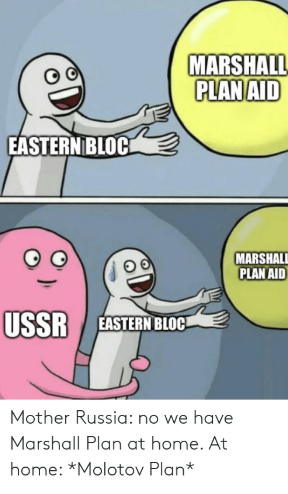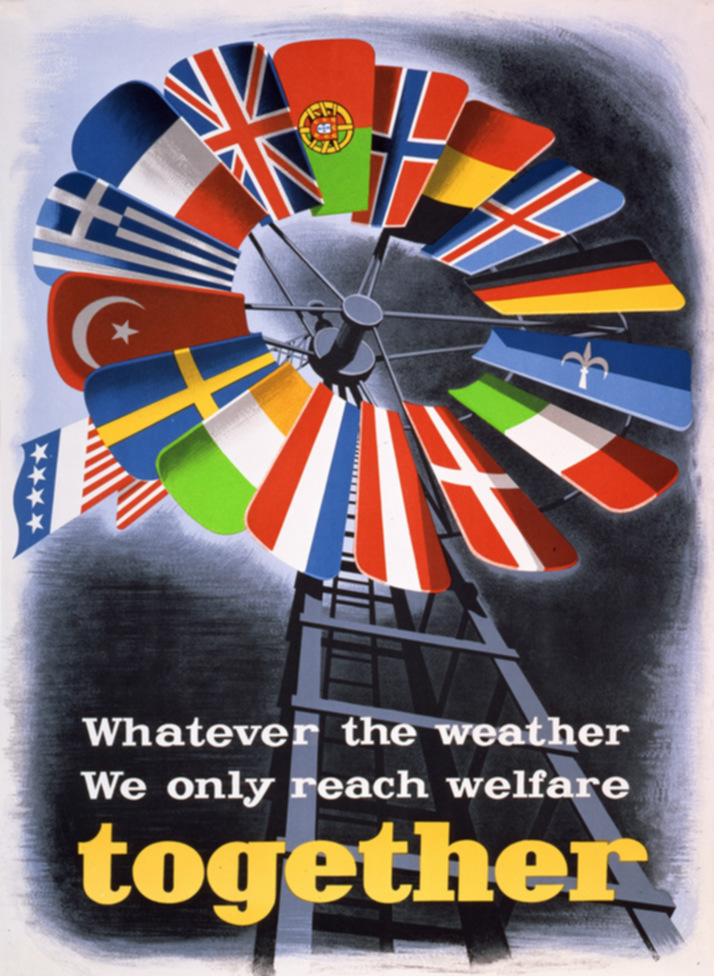9.2 Rebuilding Europe After World War II
2 min read•june 18, 2024
Sharii Liang
Isabela Padilha
AP European History 🇪🇺
335 resourcesSee Units
Practically in ruins due to WWII, Europe was struggling to recover. Entire economies were crippled, not just for the losers of the war. Only two countries could provide the aid needed to recover. The results of their differing economic aid policies would set a precedent for what was to come later on during the Cold War.
The U.S is Here to Help!
Partially worried about the rise of communism in Europe and the economic status of Europe, the US proposed the Marshall Plan. Approved by Congress, America offered $13 billion in aid to all of Europe on the sole condition that they work together for mutual benefit.
The money loaned by America stimulated the reconstruction and massive economic growth of a torn post-war Europe. Considered an “economic miracle” and highlighting the importance of consumerism in the modern world (Western and Central Europe, as well as America), the West flourished immensely. America got the trade it desired from Europe AND Central and Western Europe got the funds they need to rebuild themselves! Win-win, right?

The Marshall Plan was one of the most notable Cold War strategies, as it not only helped to recover and stabilize European economies, it strengthened the ties in the Western world. The policy, however, furthered the division of Europe because only western nations were recipients of this massive U.S benefit. Eastern nations, such as the governments of Hungary, Romania, Bulgaria, Poland, Czechoslovakia became communist nations under the influence of the Soviet union, and were excluded from the Marshall plan.
Keep That Money to Yourself
The USSR was not pleased with the US’s involvement in European affairs, to say the least. Most of Eastern Europe, under the influence and control of the USSR (satellite nations), refused the aid of the United States. This denial of aid would cause further tension between the two countries.
As an alternative, the Soviet Union came up with the Molotov Plan in 1947. All nations under the influence of the USSR or allied with them were offered financial aid. It resembled the Marshall Plan but only for Eastern Europe . This policy did not bring about the same success that the Marshall Plan did, and Eastern Europe would lag far, farther behind Western and Central Europe as a result.
This would be the first of many ideological conflicts, economic and political, between the two nations.
The scoreboard? Capitalism: 1. Communism: 0.

Browse Study Guides By Unit
🎨Unit 1 – Renaissance & Exploration
⛪️Unit 2 – Reformation
👑Unit 3 – Absolutism & Constitutionalism
🤔Unit 4 – Scientific, Philosophical, & Political Developments
🥖Unit 5 – Conflict, Crisis, & Reaction in the Late 18th Century
🚂Unit 6 – Industrialization & Its Effects
✊Unit 7 – 19th Century Perspectives & Political Developments
💣Unit 8 – 20th Century Global Conflicts
🥶Unit 9 – Cold War & Contemporary Europe
📚Study Tools
🤔Exam Skills
👉Subject Guides

Fiveable
Resources
© 2025 Fiveable Inc. All rights reserved.